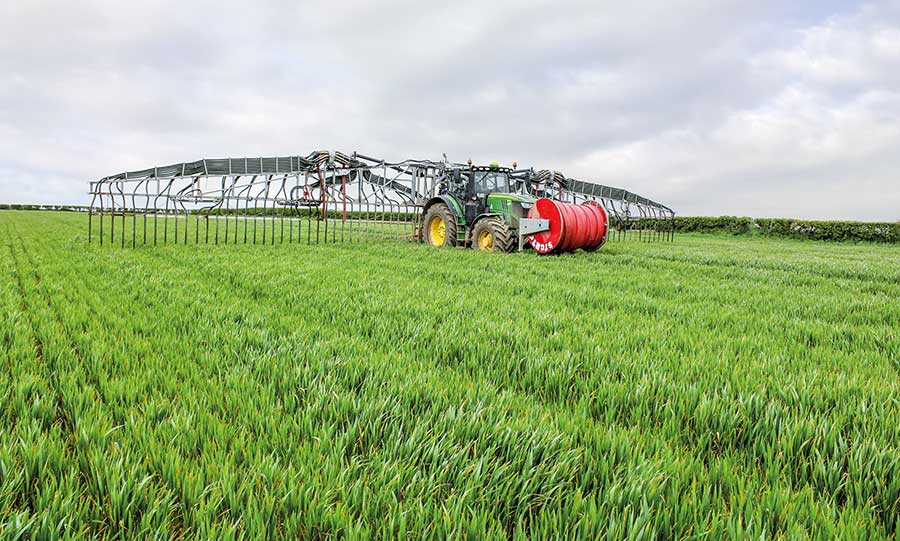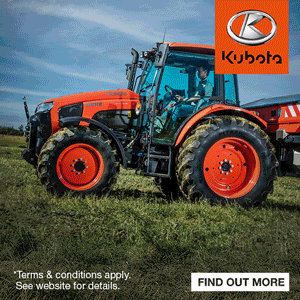Slurry system sustainability
19th July 2024
Bringing slurry management back to the farm and investing in two Vogelsang application systems has provided significant savings and whole system benefits to a Welsh dairy farm.

VJ Thomas & Son has invested in its slurry systems as its dairy herd has expanded. The 1,011ha operation is run from Pancross Farm, near Cardiff airport, and includes both grassland and arable crops. A slurry separator and a 500kW biodigester have been installed to provide a liquid slurry that is pumped through a series of underground pipes to enable umbilical application on almost all of the farm’s fields.
“We make sure everything we apply is less than 3% dry matter. This enables us to pump it through five miles of underground pipes to hydrants where we can hook up the umbilical kit and apply it using our 24m Vogelsang dribble bar systems,” explains farm manager, Chris Hanks.
Managed on-farm
The slurry is tested on-farm using an Agros testing kit, and three times a year a sample is sent to Lancrop for greater analysis.
“We have been managing the whole process on farm, with help from our agronomist David Llewellyn, for three years. As the farm has grown it has become ever more important that we are agile too. Being coastal, our weather windows can be short and unpredictable so when conditions allow we need to be at full capacity straight away,” Chris says.
The land is split, with 324ha acres set aside for silage, 243ha for maize, 405ha for wheat and the remainder planted with either spring barley or stubble turnips.
“We put two applications of slurry on the wheat crop. The maize has one application pre-emergence and another at three-leaf stage. We apply to the grassland before first and second cut too, so spring can be a really busy period,” he comments.
The farm operates a min-till system and manages all field work apart from maize planting on-farm with a dedicated team operating a fleet of John Deere tractors. With four lagoons, the underground pipe system, four 4,000-gallon tankers, and two Winbag nurse tanks, slurry can be moved around fields quickly and efficiently.
Investing in infrastructure
“Setting up and investing in the infrastructure has been a challenge, but we have the right equipment now and it is working well. We tried using trailing shoe applicators, but the stony ground meant that the shoes were pulling up stones that were then a nuisance when mowing. The volume through the Vogelsang dribble bars is also better and it helps that our slurry has such a low dry matter,” says Chris.
“We have two people teams and two tractors. Both dribble systems are 24m wide. The latest Vogelsang BackPac is lightweight, which reduces soil compaction and has a headland management system so we are only applying slurry where it is needed,” he explains.
Vogelsang’s BackPac design is centrally mounted on the tractor to reduce movement and improve accuracy. The arms fold quickly and neatly behind the tractor to make access to tighter spaces easier for operators.
Forage production
Forage production is a major concern for the farm which operates a multi cut silage system from which the first cut is fed to high yielding cows all year round. Subsequent cuts are clamped separately and fed to lower yielding, dry cows and youngstock.
“First cut is really important to us. We use an Italian rye mix and graze the leys with sheep over winter. We start by N-Min testing silage ground, then apply slurry and some fertiliser to top up the soil nutrients that can be made plant available,” he says.
Following this, and three to four weeks before harvesting the first cut, the farm uses SmartGrass to boost the gibberellic acid (GA3) which increases the cell wall thickness of the plant.
“The last application is Physiocrop, which provides additional amino acids to the grass to mitigate against stress,” he adds.
“We have a John Deere forager with Harvest Lab that provides us with data to help maximise protein, dry matter and yield. From this we have been able to utilise slurry more efficiently and manage our input costs more carefully too,” he says.
Applying slurry at varying times for the crops in the rotation has an added benefit of making best use of the farm’s tractor fleet and its workforce. Having brought slurry management back to the farm, Chris is convinced that it has been an agronomic and operational benefit to the whole business.
“Slurry application provides vital hours of work for our staff and makes better use of the fleet too. Having the best applicators helps us to make best use of a valuable natural resource, and the applicator technology is distributing it to the soil where it can be absorbed and its nutrients made available to the crop,” he says.
Wales has not seen the same grants made available for slurry management as England, which is currently benefiting from both the Slurry Infrastructure Grants and the Farming Equipment and Technology Fund (FETF).
“We have made our own investments, which have been significant but thoroughly worthwhile. Taking responsibility for slurry management and application has been a steep learning curve but it has reduced our costs and is improving our soils,” concludes Chris.
View FarmAds muck and slurry equipment for sale



